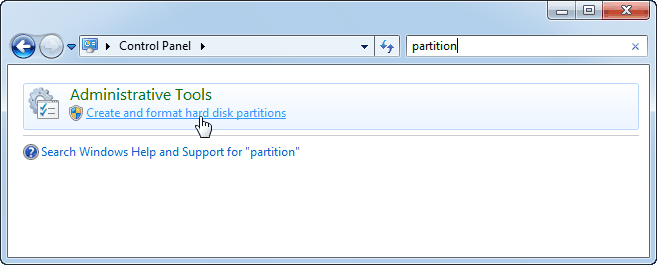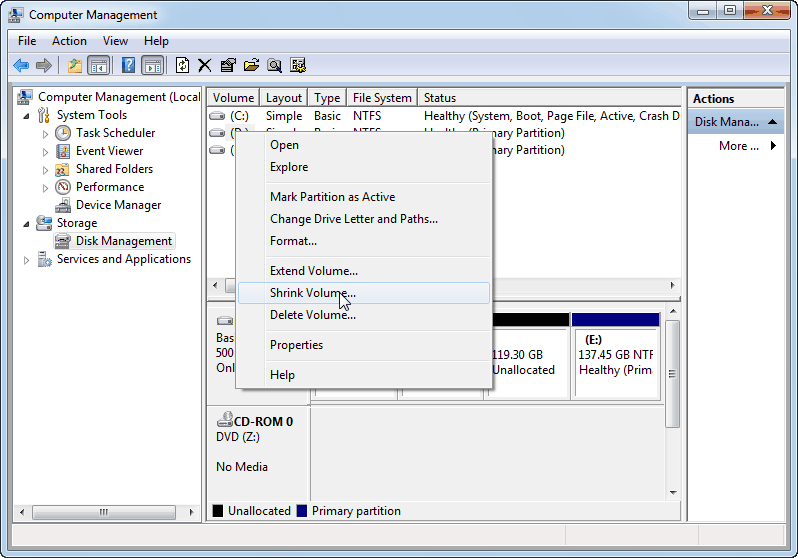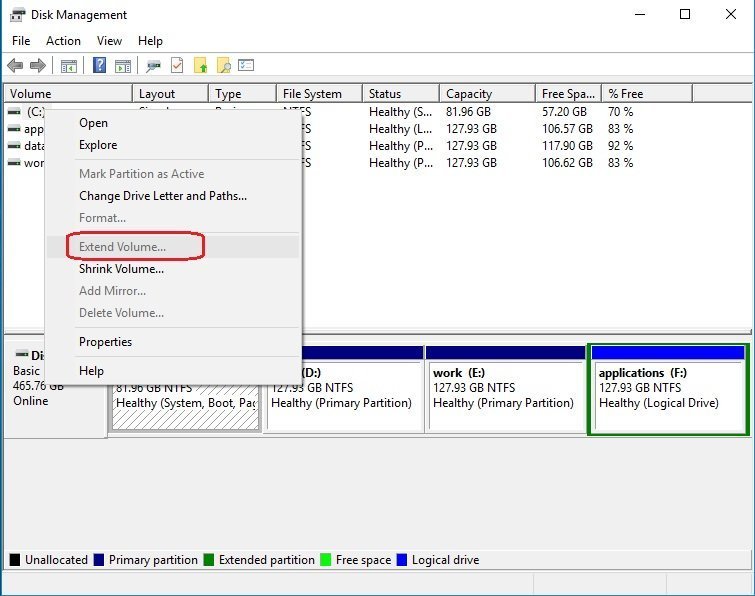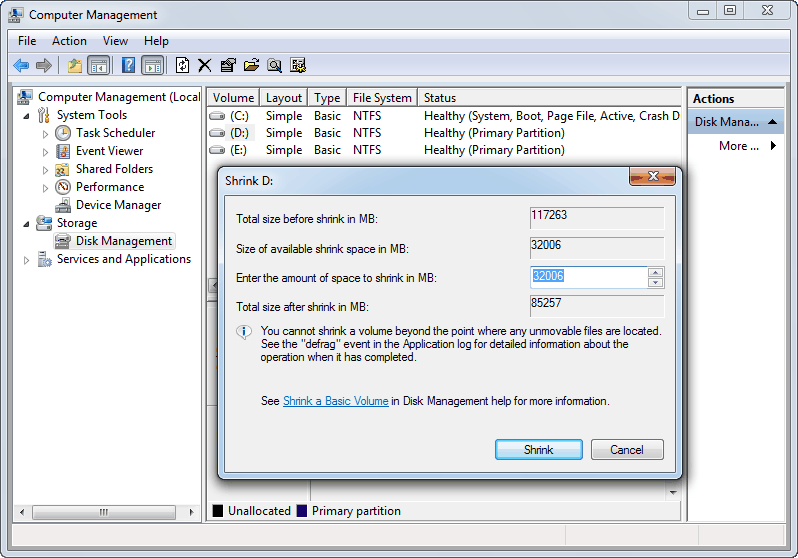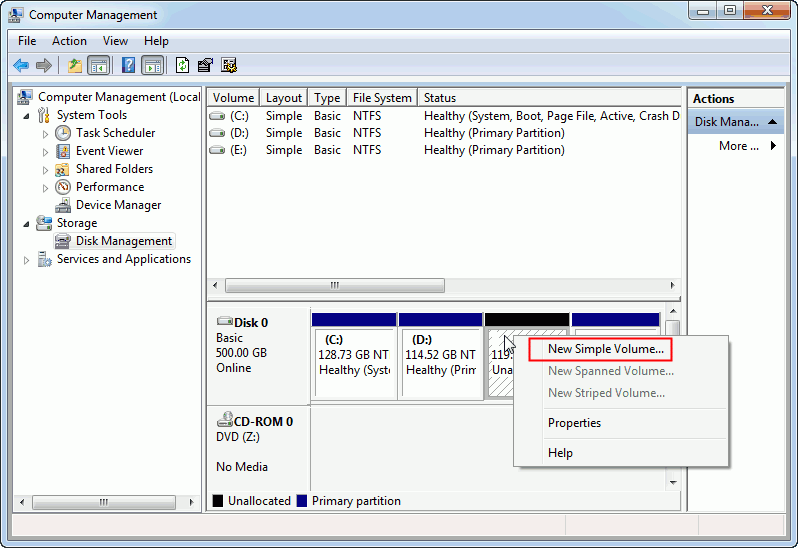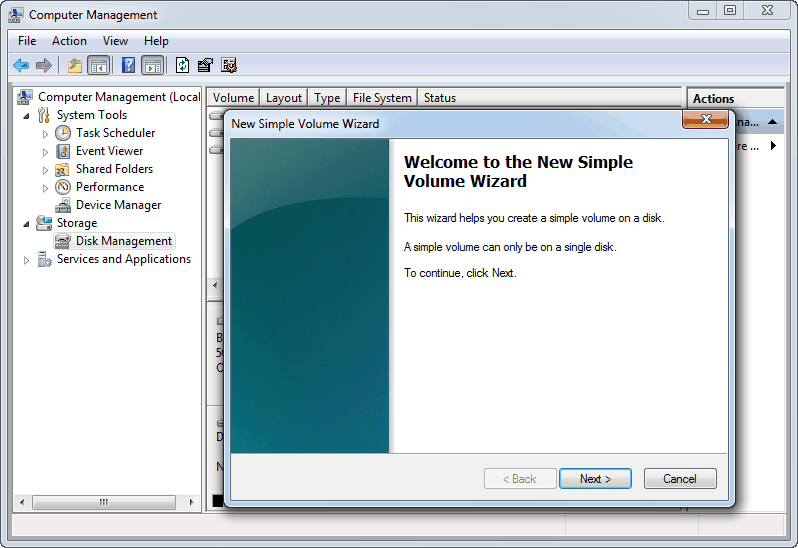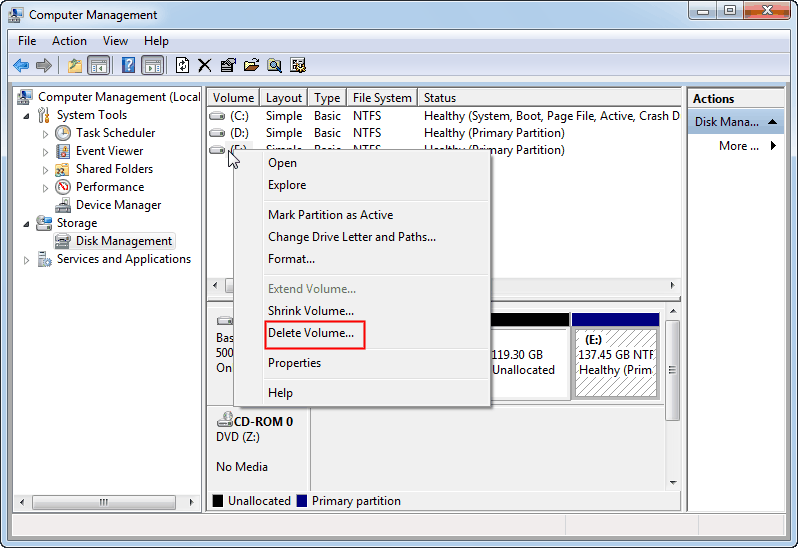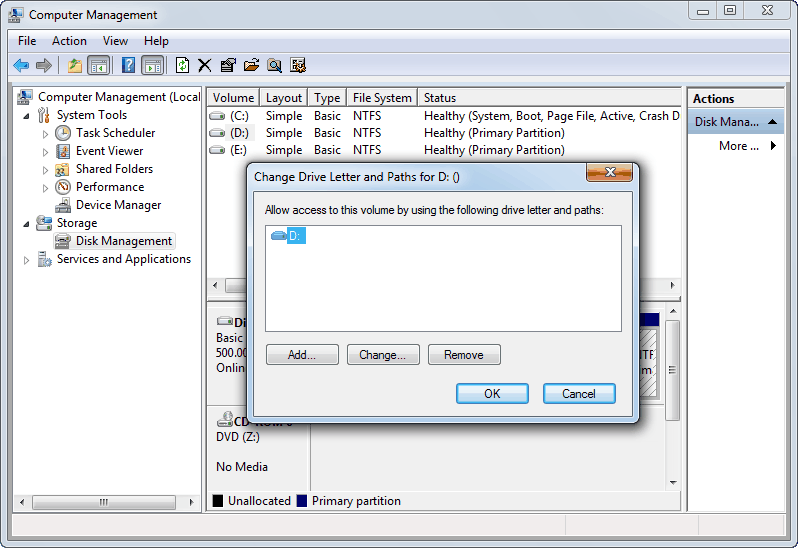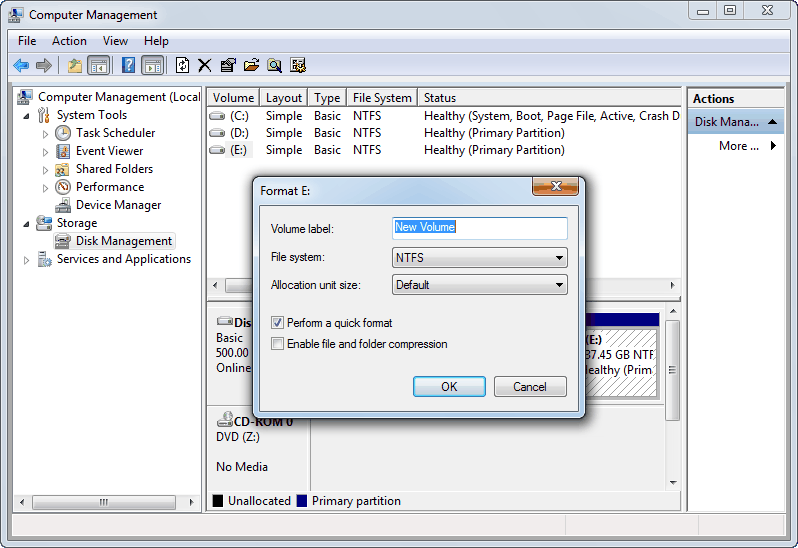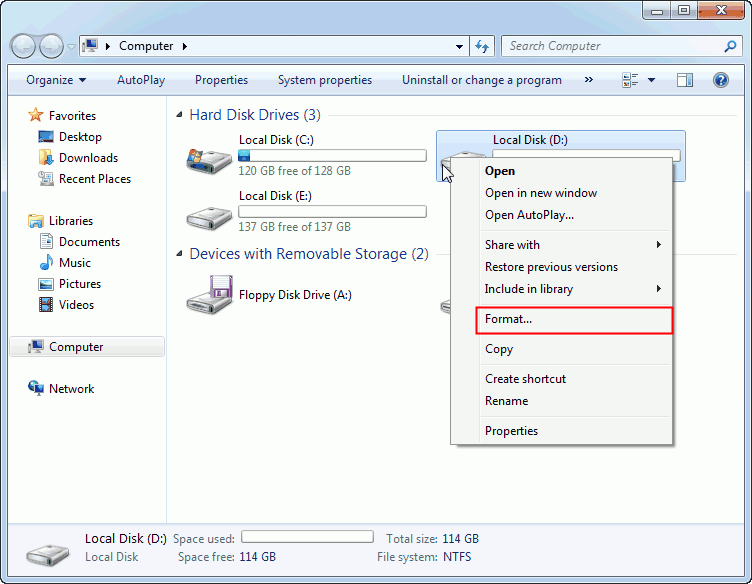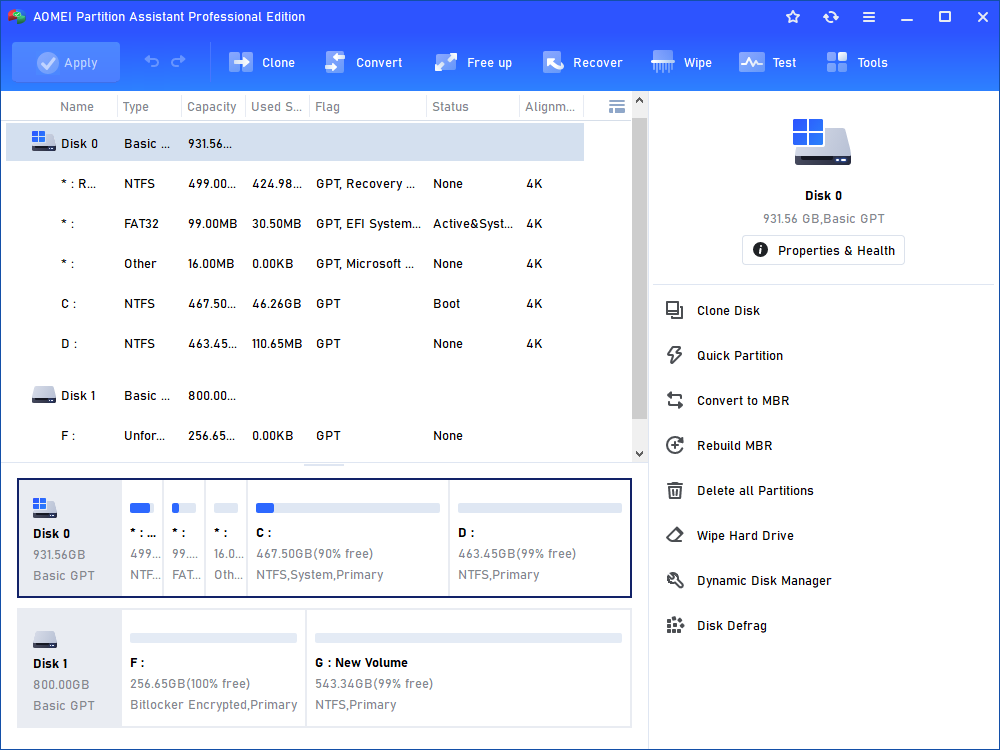Partition Hard Disk Using Disk Management
Windows Disk Management is a snap-in tool designed to easily partition a hard drive like extending, shrinking and creating volumes in Windows 10/8.1/8/7/XP/Vista/2000 and Windows Server 2000/2003/2008/2011/2012/2016. In this article, we will introduce it in details.
About Disk Management
Disk Management (DM) is a built-in tool in Windows which enables the users to view and manage the installed drive in their computer and the partitions related with those drives. With the help of Disk Management, you can create partition, format partition, extend partition, shrink partition, delete partition, change drive letter, etc. It can satisfy common demands of the users and is convenient for the users to use, so it is widely used by the users.
Accessing Disk Management
The quickest way to launch the Disk Management tool is by typing “Partition” into the search box in the Control Panel or Start menu. Just click the “Create and Format Hard Disk Partitions” option that comes up.
You’ll see a window divided into two panes. The top pane shows you a list of your partitions, referred to as volumes, and the bottom one shows you a graphical representation of your storage devices.
How to Use Disk Management to Manage Disk Partition?
Partition hard disk using disk management is a usual method taken by computer users. As a Windows built in tool for managing disk, DM can satisfy common demands of common users. Its features are powerful and stable and worth to be trusted with.
Resize Partition
Right-click a partition in either pane and select Extend Volume or Shrink Volume to resize it. Other options for manipulating partitions are also located in the right-click menu.
Extending and shrinking have some basic limitations. You can only shrink a partition if it has enough free space, and you can only extend a partition when it has unallocated space to the right of it on the same drive. You’ll see empty, unallocated space to the right of a partition if you can extend it. Windows can’t extend a basic partition to its left; you’ll need third-party software for that.
For Shrink Volume, you cannot shrink a volume beyond the point where any unmovable files are located. See Shrink a Basic Volume in Disk Management help for more information.
Create Partition
Once you’ve shrunk a partition, you can use the free unallocated space after shrinking to create another partition. Just right-click inside the unallocated space and select New Simple Volume.
You’ll see the New Simple Volume wizard, which guides you through setting a size for the partition, assigning a drive letter and formatting it with a file system.
Delete Partition
You can also right-click a partition and select Delete Volume to delete a partition and free up space. This option deletes every single file on the partition; be careful when using it!
Change Drive Letter
Right-click a partition and select Change Drive Letterand Paths to change its drive letter. Click the Change button to select a new drive letter.
Format Partition
Use the Format option in a partition’s right-click menu to format it with a new file system and erase its contents. You’ll lose all files on the partition if you do this!
You can also format partitions by right-clicking them in Windows Explorer and selecting the Format option.
Although Disk Management can help you to manage your partitions there is limitation when you want to extend your partition. It is well acknowledge that expanding your system drive is extremely necessary, if you don’t want to disturb by low disk space. Fortunately, there is software called AOMEI Partition Assistant can help you solve the problem.
Highlights of AOMEI Partition Assistant
AOMEI Partition Assistant is a professional hard disk partition manager which can solve most hard drive management problems encountered by users. The following are the reasons for why users are recommended to take it to have a try.
Powerful Features
This software can help you resize partition (extend and shrink, common partition or encrypted partition), move partition, merge partitions, split partition, migrate OS to SSD, copy partition/disk, create/delete/format partition, make bootable CD wizard, convert GPT/MBR disk, convert between NTFS and FAT32 file system, convert dynamic disk to basic, wipe disk and more.
Supporting Operating Systems
It can work on Windows 10, Windows 8.1, Windows 8, Windows 7, Vista, XP and 2000, Windows Server 2003, 2008 (including R2), 2012 (including R2), 2016 and Windows SBS 2011, both 32 and 64 bit for PC and Server OSes. It means all Windows users can use the software.
Easy-to-use Interface
With the easy-to-use interface, the users who even have not enough knowledge of computer are also allowed to use it. Besides, it avoids time consuming.
Safety
Safely partition your hard drive without losing any data.
Size
The size of the all-in-one software is very small. It takes up a little of your space.

